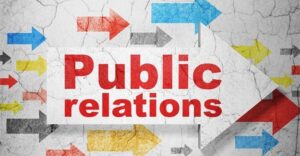Corporate communications has undergone a significant transformation in our fast-paced and interconnected world. It has shifted from a mere support function to a crucial driver of business success. Strategies, plans, and training for effective corporate communications are essential in shaping a company’s image, reputation, and overall triumph.
What is corporate communications?
Corp comms is the function in an organization that manages internal and external communications. Its main goal is to convey a company’s values, mission, vision, and objectives to employees and external stakeholders. These stakeholders include investors, customers, partners, and the general public.
Stakeholder analysis
A comprehensive understanding of the various stakeholder groups and their needs. This analysis allows an organization to tailor its messages to different audiences effectively.
Key messages
Identifying and defining the core messages that the organization wants to communicate. These messages should align with the organization’s values and strategic objectives.
Communication channels
Determining the most effective channels to reach each stakeholder group. This may include traditional media, social media, internal communication platforms, and face-to-face interactions.
Crisis communications plan
Preparing for the unexpected by having a well-defined crisis communication plan in place. Quick, transparent, and effective crisis communication is crucial to preserving a company’s reputation during challenging times.
Content creation
Creating high-quality, engaging content that conveys key messages and aligns with the organization’s brand. This content can include press releases, blog posts, videos, and social media updates.
Monitoring and analysis
Utilizing tools and metrics to track the impact of communications efforts. Monitoring helps organizations adjust their strategies in real time and measure the effectiveness of their campaigns.
Corporate communications evolution
Corporate communications used to be one-way, with organizations sending out messages through press releases and traditional media. But now, with digital media and social platforms, everything has changed.
Two-way communication
Modern corporate communications are characterized by two-way dialogues. Companies engage with their audiences, respond to feedback, and actively participate in online conversations. Social media channels and interactive websites have played a significant role in this shift.
Real-time engagement
Thanks to social media, companies can now engage with their stakeholders in real time. This enables them to address issues promptly, manage crises effectively, and build stronger relationships with their audiences.
Transparency and authenticity
The digital age has brought transparency to the forefront. Organizations are expected to be open, honest, and authentic in their communications. Any deviation from these principles can result in a loss of trust and reputation damage.
Employee advocacy
Employees are increasingly seen as brand ambassadors. Corporate communications now extend to internal audiences, where organizations encourage and empower their employees to act as advocates on social media and other platforms.
Message consistency
Through training, employees understand the company’s key messages and values, ensuring that their communication is consistent with the organization’s goals and objectives.
Crisis management
Employees are trained to respond appropriately during crises. This includes understanding the company’s crisis communication plan, maintaining transparency, and minimizing damage to the organization’s reputation.




